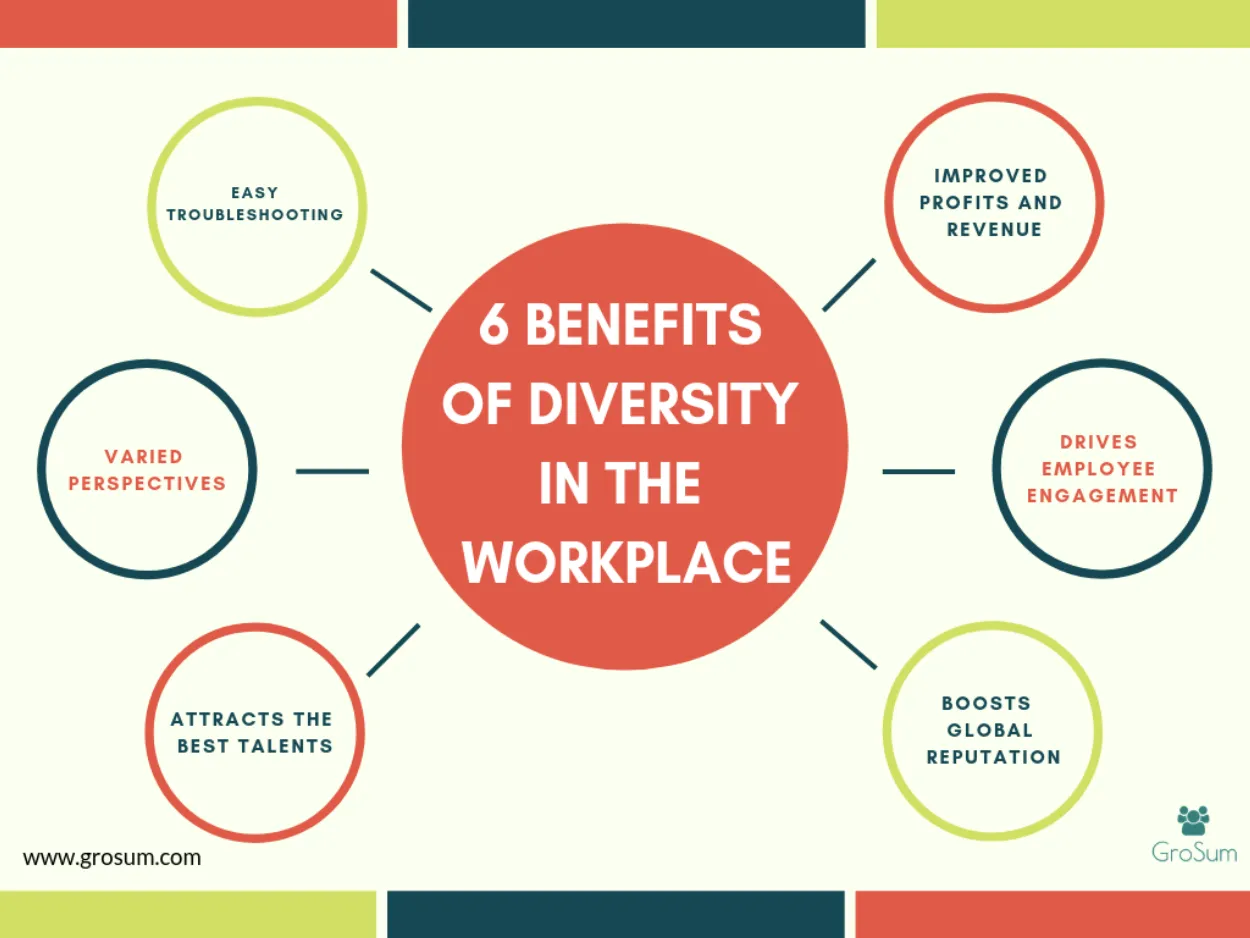Managing workplace diversity is essential for the success of any organization. In today’s globalized and multicultural society, businesses need effective strategies to harness the benefits of diversity, such as improved innovation, creativity, and problem-solving. This article explores the strategies that can help organizations create an inclusive and harmonious work environment while leveraging the strengths of diverse talents.
Recognizing the Value of Diversity in the Workplace
In today’s rapidly evolving business landscape, recognizing the value of diversity in the workplace is crucial for achieving long-term success. Diversity encompasses various dimensions, including but not limited to race, gender, age, ethnicity, religion, and sexual orientation. Embracing diversity not only fosters a more inclusive and equitable work environment, but it also brings about numerous benefits to organizations.
Promotes Innovation and Creativity
A diverse workforce brings together individuals with different backgrounds, experiences, and perspectives. This rich mix of ideas and viewpoints sparks innovation and creativity within teams. When employees feel comfortable sharing their unique insights, organizations can tap into a wider range of solutions and approaches to problem-solving.
Enhances Decision-Making
With diverse perspectives and opinions at the table, decision-making becomes more robust and well-rounded. Different viewpoints challenge biases, encourage critical thinking, and help identify potential blind spots. This diversity of thought enables organizations to make informed decisions that consider multiple angles and potential outcomes.
Expands Market Reach
A diverse workforce can better connect with a diverse customer base. Having employees who represent the demographic makeup of various target markets allows organizations to understand customers’ needs and preferences more effectively. This understanding enables the development of products, services, and marketing strategies that resonate with a wider range of consumers, thus expanding market reach.
Boosts Employee Engagement and Retention
By fostering an inclusive work environment that values diversity, organizations can enhance employee engagement and retention. When employees feel respected, valued, and empowered, they are more likely to be motivated and committed to their work. This, in turn, reduces turnover rates and helps create a positive company culture.
Diversity in the workplace is not just a moral imperative but also a strategic advantage. Organizations that recognize and embrace the value of diversity gain a competitive edge in the global marketplace. By nurturing an inclusive environment where diverse voices are heard and valued, companies can drive innovation, make better decisions, reach a broader customer base, and ultimately thrive in today’s ever-changing world.
Developing Inclusive Policies and Practices
In the rapidly changing landscape of today’s global workforce, managing workplace diversity has become essential for organizations to stay competitive and foster innovation. To successfully navigate this challenge, it is crucial for companies to develop inclusive policies and practices.
Educate Managers and Employees
An essential step towards building an inclusive work environment is to educate managers and employees about the value of diversity. Training programs can raise awareness about unconscious biases and stereotypes, enabling individuals to recognize and overcome them. This will promote a more inclusive culture that celebrates differences and encourages collaboration.
Implement Equal Opportunity Policies
Inclusive policies should focus on providing equal opportunities for all employees. This means abolishing discriminatory practices and implementing unbiased recruitment, promotion, and retention processes. Companies should strive to create a level playing field where every individual has an equal chance to succeed, regardless of their background.
Promote Diversity in Leadership
Having diverse leadership teams can significantly impact an organization’s ability to manage workplace diversity successfully. It is vital for companies to actively promote diversity in leadership roles by providing development opportunities and mentoring programs to underrepresented groups. Moreover, establishing diverse leadership sends a powerful message that diversity is valued and respected at all levels.
Create Employee Resource Groups
Employee resource groups (ERGs) are voluntary, employee-led communities that provide support and a sense of belonging for different demographic groups. Creating ERGs can help foster an inclusive workplace by offering networking opportunities, mentorship, and a platform for employees to express their unique perspectives. These groups can also serve as valuable resources for organizations to gain insights into the needs and preferences of diverse employees.
Continuously Evaluate and Adapt Policies
Developing inclusive policies and practices is an ongoing process. It is essential for companies to regularly assess their initiatives, gather feedback from employees, and make necessary adjustments. By being open to feedback and continuously adapting policies, organizations can ensure that their efforts to manage workplace diversity are effective and aligned with changing dynamics.
In conclusion, managing workplace diversity requires the development of inclusive policies and practices. By educating managers and employees, implementing equal opportunity policies, promoting diversity in leadership, creating employee resource groups, and continuously evaluating and adapting policies, organizations can cultivate an inclusive work environment that celebrates and harnesses the power of diversity.
Effective Communication and Conflict Resolution in Diverse Teams
In a rapidly evolving workplace, managing diversity has become an essential aspect of achieving success. As teams become more diverse in terms of cultural background, age, gender, and expertise, effective communication and conflict resolution play a crucial role in maintaining a harmonious and productive work environment.
One key to effective communication in diverse teams is fostering an inclusive environment where every team member feels valued and heard. Encourage open and respectful communication by actively listening to different perspectives, acknowledging diverse experiences, and promoting equal participation.
Another important aspect is the use of clear and concise language. In diverse teams, it is crucial to avoid jargon, acronyms, or excessive technical terms that may not be understood by everyone. Communication should be tailored to be easily comprehensible and inclusive, ensuring that all team members can actively engage in discussions.
Conflict is natural in any team, but in diverse teams, it can arise from differences in cultural norms, values, and communication styles. To effectively resolve conflicts, it is important to promote cultural understanding and sensitivity. Encourage team members to seek common ground and find win-win solutions that consider everyone’s perspectives.
Regular team-building activities can also help build stronger relationships and improve communication within diverse teams. These activities should be designed to encourage collaboration, empathy, and understanding among team members, bridging any gaps caused by diversity.
Overall, effective communication and conflict resolution are key aspects of successfully managing workplace diversity. By promoting inclusivity, clear communication, cultural understanding, and team-building, diverse teams can harness the collective strengths and experiences of their members to achieve greater success.
Conclusion
Diversity in the workplace is essential for the success of any organization. By implementing effective strategies and promoting an inclusive culture, companies can create a more innovative and productive environment. Embracing diversity leads to better problem-solving, increased creativity, and improved decision-making. It is crucial for organizations to prioritize diversity and inclusion in order to thrive in today’s global market.




